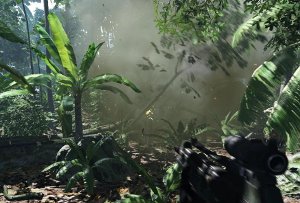For a customer I’m writing a plugin for ImageJ, a toolkit for image-processing and analysis in Java. Rick Lentz has written an OpenCL-plugin using JOCL. In the tutorial step 1 is installing the great OS Ubuntu, but that would not be the fastest way to get it going, and since JOCL is multi-platform this step should be skippable. Furthermore I rewrote most of the code, so it is a little more convenient to use.

In this blog-post I’ll explain how to get it up and running within 10 minutes with the provided information.


 The Wine 1.3 branch has support for OpenCL 1.0 since
The Wine 1.3 branch has support for OpenCL 1.0 since 
 Developing with OpenCL is fun, if you like debugging. Having software with support for OpenCL is even more fun, because no debugging is needed. But what would be a good machine? Below is an overview of what kind of hardware you have to think about; it is not in-depth, but gives you enough information to make a decision in your local or online computer store.
Developing with OpenCL is fun, if you like debugging. Having software with support for OpenCL is even more fun, because no debugging is needed. But what would be a good machine? Below is an overview of what kind of hardware you have to think about; it is not in-depth, but gives you enough information to make a decision in your local or online computer store.









 When you ever saw a CT or MRI scanner, you might have noticed the full-sized computer next to it (especially the older ones). There is quite some processing power needed to keep up with the data-stream coming from the scanner, to process the data to a 3D-image and to visualise the data on a 2D-screen. Luckily we have OpenCL to make it even faster; which doctor doesn’t want real-time high-resolution results and which patient doesn’t want to see the results on Apple iPad or Samsung Galaxy Tab?
When you ever saw a CT or MRI scanner, you might have noticed the full-sized computer next to it (especially the older ones). There is quite some processing power needed to keep up with the data-stream coming from the scanner, to process the data to a 3D-image and to visualise the data on a 2D-screen. Luckily we have OpenCL to make it even faster; which doctor doesn’t want real-time high-resolution results and which patient doesn’t want to see the results on Apple iPad or Samsung Galaxy Tab?







 Computer games are cool; merely because you choose from so many different kinds. While Tetris will live forever, the latest games also have something to add: realistic physics simulation. And that’s what’s done by GPUs now. Nintendo has shown us that gameplay and good interaction are far more important than video-quality. The wow-factor for photo-realistic real-time rendering is not as it was years ago.
Computer games are cool; merely because you choose from so many different kinds. While Tetris will live forever, the latest games also have something to add: realistic physics simulation. And that’s what’s done by GPUs now. Nintendo has shown us that gameplay and good interaction are far more important than video-quality. The wow-factor for photo-realistic real-time rendering is not as it was years ago.






